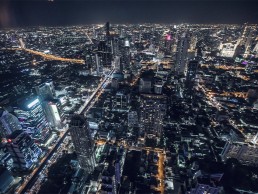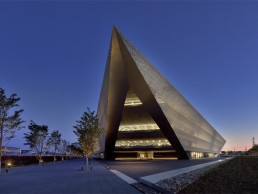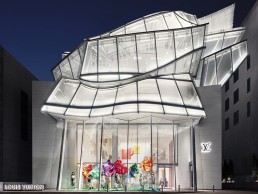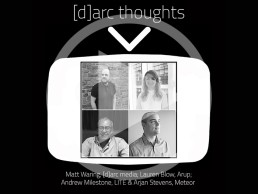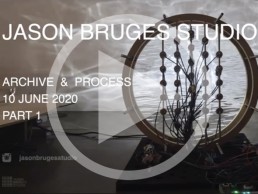WiL in Asia
Assistant Editor Sarah Cullen sat down with Women in Lighting to discuss their recent trip to Asia.
For this instalment of Women in Lighting (WiL), I travelled across the world to the Far East from the comfort of my desk, in a time when travel is not permitted due to the Covid-19 pandemic. We worked closely with the WiL team to create an article that coincides with the release of their Asian interviews, conducted at the end of 2019 in a whirlwind five-day trip that covered four cities.
I sat down with Sharon Stammers and Martin Lupton to discuss the trip:“Eight months after the WiL project began and in-between our lighting projects, we found a small window, mid-November 2019, of five days in which to cover four cities in Asia – Hong Kong, Bangkok, Singapore and Shanghai,” she explained. “We knew this would be a unique opportunity for us to expand the online interviews and cover a completely different continent. Since formalighting has its Asia headquarters in Hong Kong, their team organised this whirlwind trip to Asia, which feels like a lifetime ago - even though only a few months have passed.”
Whilst traveling across these four cities, Light Collective completed thirteen interviews with sixteen female designers, as well as attending two WiL specific evening events with “extraordinary members of lighting design”, all with the help of formalighting’s Hong Kong based team.
“In Hong Kong we interviewed Isabella Cheung from Inverse Lighting, Wendy Mak from Arup, Meike Goessling (Hong Kong’s WiL Ambassador) and Joy Wong from Light Links,” explained Stammers. “In Bangkok, we spoke with Tippaya Prasertsuk from Be Lit, Dr. Vannapa Pimviriyakul from With Light and Rinnin Kositanont from DJ Coalition. We also caught up with Thailand’s WiL Ambassador, Pilasinee Rattarangsi, at the WiL evening event hosted by formalighting.
“In Singapore, we interviewed Cheryline Chua from KLD Consulting, Josephine Dimalibot Schneider from Bo Steiber Lighting Design and Phaphorn Kasemtavornsilpa, SunYoung Hwang, Mayumi Banno and Angkana Kongchatri from Lighting Planners Associates. We also heard from Singapore’s WiL Ambassador, Yah Li Toh from Light Collab, and designer Anna Kadurina from Boomsi Lighting, at the WiL Singapore evening event where the two lighting designers shared presentations about their work.
“In Shanghai, we interviewed Jenna Liu (Shanghai’s WiL Ambassador) from Uno Lai, Phoebe Yu from Lighting Images and Lisa Wei from ATL. The last two of these interviews were in Chinese!” she added.
“We were welcomed into all the offices above and given language support from the local formalighting team when needed.
“The WiL evening events created the opportunity of meeting other local designers (both male and female) on this short trip. The Bangkok WiL dinner , held at the top of the highest building in Thailand (where we walked across the roof’s outdoor glass floor...), the WiL dinner overlooking the Bund in Shanghai, and the networking event in Singapore - again up at the top of the Altitude roof bar - were all well attended. It was great to meet up with Hong Kong WiL ambassador Meike, Thailand WiL ambassador Pilasinee Rattarangsi and Ya Li Toh, the WiL ambassador for Singapore in their respective countries.
“The response and feedback we have received from the WiL project has heightened our sense of responsibility to ensure that designers feel comfortable to reach out to us and to offer their ideas of how this platform can better support and inspire them.
“This trip resulted in a strengthening of the project in Asia and an expansion of the WiL community. It was good to be able to explain the origins of the project in person and to get opinions from other parts of the world. It was also a pleasure to personally connect with the women we interviewed and to hear their stories.
“The outcome will be 13 brand new interviews being released on the website to tie in with this article.
“Our brief immersion in the Asian culture, eating great food and appreciating amazing architecture, will not be forgotten as Asia clearly offers dynamic opportunities in lighting design. It was our first time in Shanghai, and we met with members of formalighting’s Shanghai office team, so our overnight visit introduced us to lots of new lighting professionals and we hope to return for another visit one day and reconnect with all these new WiL supporters.”
arc sat down with a number of WiL Ambassadors across South-East Asia to discuss their experiences as women in design as well as their roles in their lighting communities and how they became ambassadors for the WiL project.
Ya-Hui Cheng is the ambassador for Taipei as well as Founder and Design Director of Light Poetic International. She holds an undergraduate degree in Interior Design from CYCU in Taiwan, a Daylighting Design postgraduate qualification from KTH in Sweden and a Master’s degree in Architectural Lighting Design from Hochschule Wismar in Germany. She has delivered speeches at multiple PLDC events and received an IALD award in 2016. In 2017 she received both IES International Illumination Award of Merit and Excellence in USA, and in 2019 she was the on the judging panel for the [d]arc awards.
When asked about her experience as a woman in the lighting and design industry, Cheng commented: “I was once asked by a male manager about my future plan to have a baby, so the office knew how to plan my future opportunities and position - this is kind of discrimination. A lot of women hide their baby plans, so they still get fair chances at work. I believe the fact that having a baby and taking care of a newborn should be a plus for the women’s professional experience. Such experience makes them more caring, open minded, tolerant and resilient.”
At the time of writing, the majority of the world is in lockdown amidst the Covid-19 pandemic. As such, we asked the WiL ambassadors what their experiences were in Asia during this time. Cheng added: “The lockdown has proved that work can be conducted at home. That makes it possible for women or couples to work at home while children are around, and it promotes a work/life-balanced lifestyle.
“Together with the ambassador in Shanghai, we had spoken with formalighting at the end of last year to make plans for an event in February this year. However, the pandemic has delayed this plan. I have also talked to local lighting art and culture foundations, as well as a few Women in Lighting entrepreneurs at various lighting occasions, and they are fully aware of the WiL movement. Once the social distancing period is over, we will resume planning of the event.
“I am also planning to work with a group of women in architecture so we can share more insight and experiences.
“It is very exciting to see more and more women make their voices heard in many professional and public occasions. However, we hope to see louder voices from men to support their partners and wives to carry out their professional dreams.”
Meike Goessling is the ambassador for Hong Kong. With a background in Architecture, Goessling made the common step into Architectural Lighting Design. “I trained in Germany, the UK and the US, and then worked for Lichtvision in Berlin until relocating to Hong Kong to set up their local office there. It has been exciting, challenging and also a rewarding time working with a great crowd of people on projects ranging from bespoke installations to large-format and technical developments. Having recently changed my role, I am an independent lighting consultant today. It is a privilege to be part of Women in Lighting and based on some feedback I got throughout the last months, I hope to be able and share some of this experience so far,” she told arc.
When asked about her experiences as a female designer, she reflected on how WiL was the reason she paid attention to the role her gender had played throughout her career so far. “I did not think about the ‘female’ aspect of my work as something particularly unusual until WiL approached me. From day one of my education, as well as during work life, I experienced a high percentage of female students, architects and designers. Looking back, I approached most challenges with a pragmatic ‘how to…?’ mindset and a variable degree of stubbornness, finding a solution.
“The lighting world is very well connected, whether across countries or markets, and I think the high number of women in lighting supports this collaborative aspect. Living in an environment that involves people from different backgrounds and parts of the world, I experienced that eventually how you do your work and what you do matters most.”
Reflecting on her experiences during lockdown in Hong Kong, Goessling commented: “At the moment, there is a lot of attention on the direct consequences of lockdown. The impact on people and societies varies a lot, it materialises in different aspects of life or at another time. Whenever my thoughts go spinning, I try to remind myself of the perspective beyond and those things that don’t change. Yet, there are new experiences and lessons learned. For lighting design, the long-term change in living and working environments requires attention, just like our exposure to different light sources. Think about the efficiency of virtual meetings weighed against the value of personal meetings and observing light with your own eyes. This will impact how we develop a design within the team and how we specify our designs, eventually having an effect on the process and the outcome.
“Gatherings in Hong Kong have been impacted by recent events, but this allowed us to connect with another woman in lighting, which is Sharon Maghnagi. She has been incredibly helpful and thoughtful no matter what.
“Physical meetings are of high value here and I am still not a keen user of social media, but with more and more people becoming used to virtual socialising, I would throw some previous hesitation overboard and think this can be an opportunity, not just locally.
“With the idea to create awareness and improve visibility of the many Women in Lighting, I hope to share experience and learn from each other. Maybe this can be an opportunity for younger designers to raise their questions, which they may not want to in their daily environment. Ambition is not a negative thing to have and should be used as a positive drive. But getting back to your previous question about my personal experience, eventually there should be a ‘normality’ where a person’s individual abilities and attitude are relevant.”
Yah Li Toh is the ambassador for Singapore and Principal at Light Collab. After completing a degree in Architecture, like many others she was inspired to venture into Architectural Lighting and went on to complete a Master’s in the subject at Hochschule Wismar, quickly followed by accepting a role in Singapore with the Lighting Planners Associates.
“I did not think of starting a practice, but I went along with whatever came my way, so I started freelancing for a residential project and things became busier as more projects came in, which is when I decided it was a good time to start Light Collab properly in 2010. Of course, it has been a challenge for ten years now – from starting a practice, getting clients, hiring your first staff, your first office rental, a bigger team, mentoring staff and business continuity, branding and having a competitive edge,” she explained.
“Things started to change in 2015 when I became a professional member of the IALD and also one of the first five people in the world, and the first woman, to be recognised as a Certified Lighting Designer (CLD). Doors started opening and clients had more confidence in my, and Light Collab’s, competency and were willing to give us a chance to embark on projects. With more projects completed, we were also able to submit for awards such as LIT and IES Awards and finally the practice and its work are bearing fruits.
“In 2018, I was also very honoured to be one of six to be shortlisted as Designer of the Year for the Singapore President’s Design Awards and the only one to receive commendation from the Jurors. 2019 was a really memorable year as I was also named in the top 40 under 40 lighting designers by Lighting Design Awards 2019 and also a Generation T Honouree for List 2019 for Asia Tatler, one of the 20 future-shapers honourees by the Peak magazine and recipient of the Skillsfuture Fellowship Award 2019.
“My profession allows me to explore different facets of myself, being a design-preneur, to grooming the next generation of lighting designers, to bringing together the industry as the regional coordinator for IALD SEA. The IALD also gave me lots of opportunities to grow professionally; being an advisor to the CLD Board and serving as a judge for the 36th IALD Lighting International Awards in 2019. I am also very grateful for the chance to be able to have various opportunities to spread the love of light and awareness of our profession through documentaries for national TV and radio stations.”
Speaking from her experiences as a female designer, she added: “Generally in Singapore, it is still fine. Many of the competitors are led by male figureheads and designers in the design industry. In the lighting industry, sometimes there is also a slight stereotyping that women are not hands-on enough, or their technical knowledge is not as strong. There is also some preference for foreign talent too in Asia. Thus, it is important for a local female lead designer to have a voice and presence in order to lead the company locally and internationally.”
Kaori Hiroki is the Japanese Ambassador for WiL and Founder of Lyshus. She has experienced an equal gender balance in the lighting industry in Japan, claiming a 50% male/female split. However, when working on a current series of interviews with fellow Japanese female designers, she has uncovered opposing views. “I heard a lot of great stories from each woman I interviewed. However, I found that many women have struggled with ‘old-fashioned gender roles’ and sometimes constrained themselves. I think now is the time to realise the bias and improve circumstances for our future generations.”
Pilasinee Rattarangsi is the Ambassador for Thailand and is the Founder of Rangsi Atelier. Rattarangsi graduated with a Bachelor of Architecture and a Rector Certificate of Honours, before continuing her studies with a Master’s of Architectural Lighting Design at Hochschule Wismar. In 2005, she completed her Theatrical and Architectural Lighting Design apprenticeship with Jesper Kongshaug, Scenograferne, Det Kongelige Theater (The Royal Danish Theatre), Lundgaard and Tranberg Architects in Copenhagen, Denmark. Speaking of her experiences as a female designer, she said: “It has been a great experience for 16 years in lighting so far. Nothing to complain. Ok, maybe a little bit… We work with light and darkness, so sometimes being woman and working late could be difficult in some contexts.
“We are big ‘family’ here; lighting designers in Thailand. So many of us are friends on Facebook. We share ideas, projects and also our personal life. We have a very friendly atmosphere and it’s very Thai also, I would say.
“Women make up the majority of lighting designers in Thailand and we all are in the spotlight and receive mutual respect. We have had a Facebook group for Thai Lighting Designers since around 2006 and we share knowledge etc. on there, and once a year we come together to create a lighting installation piece at Bangkok Design Week.
“I would like to acknowledge the WiL team and their dedication. It has been growing beautifully, and I am happy to be a part of it. It is great if I can be a small connecting point for Thai lighting designers and the other designers elsewhere. When I talk about this project to suppliers, universities, professional friends, they also appreciate it a lot - and they really like the name ‘Women in Lighting’, they said it is such a powerful name.”
When asked about her perspective of women in lighting and business and her time living in Hong Kong, Sharon Maghnagi of formalighting, said: “In my case I am grateful for the childcare infrastructure in Hong Kong that helped me to seamlessly return to work after only a few weeks of having my second child, which then allowed me not to lose momentum on the projects I was in the middle of developing, before I gave birth,” she explained. “Hong Kong really has a cultural mindset of enabling a woman’s participation and productivity in the work force and I consider myself very fortunate to work here and contribute as a result of the opportunities afforded to me by this great city.”
Upon reflection on their trip, Light Collective received a huge amount of feedback that brought with it a sense of responsibility to “ensure that designers feel comfortable to reach out to us and to offer their ideas of how this platform can better support and inspire them”.
Stammers added: “This trip resulted in a strengthening of the project in Asia and an expansion of the WiL community. It was good to be able to explain the origins of the project in person and to get opinions from other parts of the world. It was also a pleasure to personally connect with the women we interviewed and to hear their stories.”
Looking back at their trip, we asked Light Collective if they had witnessed any interesting comparisons with other international trips they had conducted as part of the WiL interviews. “The interviewees in Asia appeared to be more confident. Even speaking in English as their second or third language, the interviewees were very composed and confident in their delivery. They proudly shared their portfolio of projects but remained so humble notwithstanding the impressive scale of their projects and significant impact of their work,” explained Lupton.
“The main difference seemed to be the approach to design - there is a softer approach to the application of light, which would appear to come from cultural reasons. Vannapa, for example, talks about Buddhism and how it inspires her work in her interview.
“Tippaya literally took us on an idyllic journey of a prestigious resort with the images of her lighting design scheme for the project. We felt so tranquil watching the project on the slide show, that we all longed to experience an actual stay there. The scheme she created was conscious of light pollution in this luxurious sanctuary, yet she upheld the prestigious standard of the renowned hospitality brand.
“Lighting design in Asia has its own identity and high emotional intelligence, which the women we interviewed were strongly connected to.
“It seems incredible now that we were able to easily fly to all these places and meet all these women in their offices, given how much the world has changed since. We couldn’t have foreseen the importance of this connection now, but to have this digital library - which is not on any time schedule, and communicates inclusivity - has allowed us to build on actions, which are more relevant to our circumstances today – like the WiL in Lockdown initiative [a collection of submitted snapshots of WiL and supporters from their homes during lockdown], which is so uplifting to read during a period of isolation.
“It may not be directly related to our recent trip to Asia, but it was very exciting to see that recently a lighting designer from Beijing submitted her own interview on the website. We also received three more interviews from designers in Japan. We hope this will continue and that the WiL movement will reach other areas of Asia and engage designers through our inviting community.”
To coincide with the publishing of this article, Light Collective have published the first set of four interviews. “The digital world has recently seen a tsunami of webinars, chats, panels and interviews and our concern was that if we released them one at a time, they would get lost. Over the next two months, we plan to release a set of four interviews every two weeks. Each set will include an interview from one of the four cities we visited in Asia. They will all be available on the Women in Lighting project website and on some of our partners sites.”
Otemon Academic Ark, Japan
The Otemon Gakuin University’s newest campus opened a year ago in the heart of Smart-City Ibkaraki in northern Osaka, Japan. The 40,000sqm facility is home to half of the university’s student population, equating to roughly 3,600 students.
Designed by architectural firm Mitsubishi Jisho Sekkei with lighting design from akari+DESIGN, the striking triangular structure presents a beautiful learning facility for the students.
Project Architect Yasuhiro Sube sat down with arc to discuss the project: “I wanted to design a one-building campus that would encourage communication in the age of texting and smartphones. My inspiration was the image of an iconic inverted triangular pyramid floating over the Earth,” he explained.
“An analysis of the surrounding urban landscape led me to conclude that a triangular plan was most appropriate for the site, and this developed into an inverted pyramid form, a powerful contemporary shape that attracts students and community members. I used environmental simulation software to further refine the form through computational design.”
In an age of internet technology increasing the ability to communicate remotely, the architects were driven to create an educational complex that would draw students in, stimulate their interests and encourage exploration.
Taking inspiration from traditional Japanese shrines, the architects created the dubbed Academic Ark as a place of gathering, much like that of a shrine that attracted pilgrims from across the country to meet. The Academic Ark’s outstanding triangular form presents steeply angled sides that create an inviting “gate” that students and educators enter through. Inside the Ark, audiences are welcomed with a great floating silver volume in the main hall. The floating volume contains a library filled with books and a book trail that encircles the centrepiece, which is flanked by six large classrooms on both the second and third floors. Above, 21 classrooms fill the fourth and fifth floors. “A large void between the library and the book trail allows for visibility between the floors, making apparent the energy created by a learning site where individuals both see and are seen by each other,” explained the firm.
Lighting design, by Hiroyasu Yoshino and Mai Okada at akari+DESIGN, was integrated in the early stages of design in a close working relationship with the architects. “I contacted Mr [Hiroyasu] Yoshino at quite an early stage in the project, once I’d decided on an inverted pyramid form with a floating library inside,” explained Sube. “I wanted the lighting to strengthen the impact of the design, so that the structure and space would really stay with people. Mr Yoshino and I have collaborated on other projects, and I love the way his lighting design is modulated to create a mysterious atmosphere, similar to the light of the sun and moon.
“Mr Yoshino’s lighting is as essential to my spaces as the sun and moon. The most striking space is useless in the dark. His lighting is an art, with the power to give life and emotional impact to architecture, differentiating it from ordinary environments.”
Speaking of his collaboration with Yoshino, Sube added: “I tell him about the space I am envisioning and the points that require special attention from the perspective of user convenience and leave the rest to him. Satoko Uda, Mitsubishi’s electrical engineer, also collaborates with Mr Yoshino not only on the engineering but also on issues related to post-construction management and operation.”
When discussing the design details for the floating library, Sube describes how the working relationship with Yoshino influences his architectural choices. “We jointly came up with the idea of using reflective material from the K-Spot spotlights designed by Shiro Kuramata, whose work we both love,” he said. “I’d been wanting to use that material in an architecture project, but there weren’t any previous examples of it being applied in such a large space. The way we worked with contractors and construction workers unfamiliar with this industrial item was through trial and error to create a huge, seamless floating mass, made a strong impression on me.”
Inside the Academic Ark, the modern architecture is enhanced with the use of architectural lighting, which defines the lines and textures of the building.
“My brief was to attractively illuminate this unique triangular architectural form,” explained Yoshino. “I was also asked to design artistic, centripetal interior lighting, and exterior lighting that would make the structure into a reassuring local landmark. These fundamental concepts remained consistent from start to finish.”
Yoshino claims his initial impressions of the triangular structure, both inside and out, were like that of a spaceship. “I wanted to somehow use light to make this silver form float in the air,” he explained. “I was also thinking about maintenance and using indirect lighting in a way that creates a physical sensation. All of the interior spaces are lit with long, thin dotless LED lights. These thin lines of light emphasise the edges of the triangles, creating a futuristic impression. In particular, the 15mm-wide linear LEDs on the outside of the corridor handrails both effectively bring out the library’s exterior walls and contribute ambient light to the entire atrium through reflection.”
Inside the library space, Yoshino encountered one of the inevitable challenges a project like this brings. One of the structural constraints he faced was with the library bookshelves. “At first, I intended to install horizontal LEDs on the shelves, but I then learned that the lights could not be attached there, so I hastily switched to vertical linear LEDs on the boards forming the sides of the shelves so that the bookshelves themselves function as lighting,” he explained. “Switching to a vertical design had the added effect of emphasising the height of the shelves and making the space more striking, so the design ended up evolving thanks to on-site problem solving.”
Yoshino’s lighting scheme was so successful due to the attention to detail he carried throughout the building and to the student’s wellbeing when using the space. One example of this is seen in the embedded LEDs in the handrails illuminating the exterior of the library in the atrium. He explained further: “These linear dotless LEDs are controlled with a DMX signal, which dims them in a slow, random pattern. I felt that the light needed to flicker in this way because there are no skylights or other source of natural light in this space. When students leave the classrooms, they experience a sense of passing time arising from this flickering light, which is similar to slowly passing clouds.”
Along with the health and wellbeing of the student’s playing a big part both the architectural and the lighting designs, the architecture was also sensitive to its environmental impacts. As Sube explained: “The façade is fabricated from unpainted cast stainless steel, treated to prevent dulling and shaped like cherry blossom petals - the first example of its kind in the world. This “eco-screen” reduces thermal load by 50% and blocks visibility from the surrounding residential neighbourhood, so that those inside and outside the building are not aware of one another.
“In Japan, when the cherry blossom trees are in full bloom, groups of friends gather under them to eat and drink. I wanted to create a place for learning that was surrounded by this same motif of cherry blossoms in full bloom. For the past 10 years or so, I have been interested in the potential of cast metals to reduce environmental load by lowering the amount of solar heat that buildings absorb. Cast aluminium must be painted but cast stainless steel can be used as-is in a façade. I’d used this contemporary approach previously on commercial façades and interiors at the Taipei Nan Shan Plaza in Taiwan, and this current project further deepened my understanding of the material.”
Yoshino’s lighting design responded to this awareness of environmental impact, and he specifically chose LEDs for their environmentally friendly and long-lasting nature.
“Architects can give their buildings windows and skylights to bring natural light inside. That makes the interiors more comfortable, but the accompanying solar radiation can also create an unpleasant environment,” added Sube. “In the areas where the stainless-steel façade and windows don’t bring in sunlight or moonlight, Mr Yoshino went beyond providing the bare minimum of necessary light by contributing to the creation of one-of-a-kind artistic spaces.”
Throughout the Ark’s unique triangular shape, Yoshino’s design emphasised its shapes, yet stayed discreet and unassuming. “Because the architectural design was so incredibly futuristic and fantasy-like, I did my utmost to ensure that the lighting design would be unnoticeable,” explained Yoshino.
“The building has so many sloping and acutely angled forms, I decided to illuminate them only from a fixed direction. That created shadows, and a contrast of light and dark that emphasises the forms,” he added.
“Wherever possible, I designed the lighting to follow the circulation paths and architectural forms so that it would blend into the space. Aside from the classrooms, I did not attach downward-facing fixtures to the ceilings. That allowed me to illuminate the ceiling and wall surfaces so that the forms came forward strikingly.
“The narrow dotless LEDs also allowed me to linearly connect the lighting into a seamless overall design. The dotless lights look like the lightsabres in Star Wars, which I felt was perfect for creating a futuristic, new kind of space.
“I’m very pleased with how the lighting design turned out. I think that thanks to the lighting plan, the lighting became an element of the architecture. It’s not simply task lighting or illumination, but instead functions similarly to wallpaper or curtains. I feel like the small, delicate LED lights gave rise to a new kind of design,” concluded Yoshino.
Louis Vuitton Maison Seoul, South Korea
Louis Vuitton announced the grand opening of Maison Seoul, a new South Korean flagship store, last year.
The opening of Louis Vuitton Maison Seoul marks a further link in the already strong connection between the Maison and Korean culture. Located in the prestigious Cheongdam-dong in the Gangnam district, the new flagship store brings together two world-renowned architects’ visions: Frank Gehry’s poetic façade and Peter Marino’s dynamic interiors. Throughout the store’s five floors, all of Louis Vuitton’s collections can to be experienced in a variety of intimate spaces, connected by an airy, floating staircase. Clients are provided with an entirely unique private shopping experience surrounded by works of art, historical Louis Vuitton archival objects and artisanal savoir-faire.
On the uppermost floor of the store, Louis Vuitton also inaugurated the Espace Louis Vuitton Seoul, the fifth exhibition space of its kind around the world. For its very first exhibition, the Espace Louis Vuitton Seoul presented eight emblematic sculptures by Giacometti, that belong to the collection, including L’homme qui chavire [The man who capsizes] (1950) and Grande Femme II [Tall Woman II] (1960).
L’Observatoire International was brought on board to complete the lighting design for the flagship store after a pre-established working relationship with the retailer. “We have a good relationship with Louis Vuitton from a number of projects, including the Fondation Louis Vuitton, where Gehry Partners was also the design architect,” explained Hervé Decottes, Principal of L’Observatoire International. “We were brought in from the beginning to create the overall lighting concept for the gut renovation of the five-story building, which includes retail spaces, multi-cultural space, façade and exterior lighting. The project took four years from the start to completion.”
Working on the project alongside Decottes, from L’Observatoire International, was project leader Jessica Jie Soo Tchah and project team members Carrie Chang and Sam Power .
“The nature of the building’s signature Gehry architecture brought with it some design challenges for the team to overcome when implementing the lighting scheme,” elaborated Tchah. “For areas in the Gehry Partners scope, the glass façade volumes, with a series of enclosed terraces, were the main challenge. We had to locate the fixtures within the very complex geometrical shapes of the building. Each curved glass panel has a different shape and height, and is positioned in different angles, but the lighting effect needed to be revealed in the same manner throughout. In addition, as fixtures are located in interior spaces, the detailing needed to be visually pleasing to the visitors.”
In order for this to be accomplished, the luminaires were tried and tested in multiple full-scale mock-ups and 3D modelling reviews to provide glare-free illumination.
“To enhance the dynamic and poetic façade, we grouped lighting control zones according to volume, including roof louvers, and within the volume, different height glass panels had separate control zones. During the scene setting proofs, each volume was set with different dimming percentages,” explained Tchah.
“For areas where the Peter Marino team designed interior retail spaces, the main challenge was to harmonise the atmosphere and lighting elements from each floor to Gehry’s façade.”
Each floor represents a different universe, according to Marino’s interior design, but the obvious statement comes from the airy and spacious entrance atrium. It was important for the lighting scheme to respond to this vast space and connect the different universes with the varying lighting fixtures from Flos, Feelux, formalighting and SR Luxconex, considerately placed to avoid being visible. “The lighting gesture was to reveal Peter Marino’s modernist interior volumes, embracing textural stoned walls, and using grids of light to allow for flexibility throughout the space to highlight merchandise. By providing back drops with perimeter illuminated walls, lighting created depth within the spaces,” continued Tchah.
“The other challenge was to locally source the majority of fixtures. To accomplish both the client’s and our desires, most of the lighting fixtures were developed as custom fixtures [from IMS, PTG and Miso Lighting] to meet our required design criteria to support the project’s specifications.”
Over the course of the project, the fourth floor changed purpose from a permanent dining café to a multi-purpose space that required flexible lighting. The original lighting plan for the dining area aimed to “light the dining tables using fixtures with a very tight beam spread, since the ceiling is five-metres high,” said Tchah.
For the updated layout the team “kept the same track lighting system but reconfigured the layout and modified beam spreads for the fixtures, with added wallwashers.”
Due to the nature of the building’s structure, the team had some issues with placing the fixtures. “We had placement issues for the interior ceiling lights, which were conflicting with the existing MEP system. Because of limitations of height above the finished ceiling, the fixtures were replaced from a track system within a recessed backlit slot gorge to a low-profile recessed track system with surface mounted track heads and linear glowing light lines to provide ambient lighting.”
To enhance the beauty of Gehry’s architectural statement, the façade of the building was illuminated from the inside out. “The key was to provide lighting from the enclosed spaces and integrate the detailing as a part of an architectural element. During the daytime, light fixtures are hidden but as night falls, light accentuates each volume and creates a lantern effect for the glass volumes.
“We had several mock-up studies with a 1:1 scale single glass panel with the team, then two large full-scale visual mock-ups were constructed with cladded glass from a high zigzag-shaped vestibule and window, and a series of enclosed terraced spaces and roof louvers,” she added.
During the visual mock-up stages, the team reviewed the lighting fixture locations and specifications as well as the mounting details, cable management, remote power supply locations and the lighting control system.
“The review process was very critical for the team, as most of the structural elements (tubular structure, membranes, glasses, joint, etc.) are exposed and lighting elements had to be accommodated accordingly within the listed elements discreetly,” continued Tchah.
In order to combat potential glare from the LED chips, the team designed custom luminaires to reduce visibility of the fixtures. “For the signature façade, most of the light fixtures were visible from different viewpoints and reflected in the curved glass paneling. We had a limitation on locating the fixtures, where they are mounted above the tubular structure, so we developed fixtures that can rotate and tilt in a wide range to reach not only floor surfaces, but also wall surfaces.
“In terms of lighting controls, daisy chaining was one of the important factors for wiring, since we had a limitation on locating remote drivers.
“For the interior spaces, besides lighting the merchandise with high-quality fixtures from exact fixture offsets, we had to consider the strict lighting layout, with grids of light for flexibility throughout the space. We specified and designed the fixtures and layouts throughout to have a minimal, clean aesthetic with options to have flexibility.”
The ground floor entrance space had specially developed custom track fixtures that were used to target three visual elements from a single DALI track system. One was used to highlight the artworks that are mounted on the stone wall and suspended in space using projectors with medium beam spreads. The second set was aimed at the merchandise using projectors with very tight beam spreads, and the third washed the stone wall with a soft, wide beam spread.
Throughout the retail space, L’Observatoire International designed fixtures that aimed at all the products, including those on top shelves. These fixtures were easy to aim and lock during the light focusing. A customised-finish Flos fixture was used on the stairs to combat the site and programmatic restraints of height limitations under the stairs.
Overall, the team created a successful lighting scheme for the designer retail space. “As we were collaborating with Gehry’s and Peter Marino’s teams, we wanted our lighting design to harmonise with their spaces and give continuity throughout, even though each space has a different concept and programme,” reflected Tchah.
“We designed the entire building to be controlled with an astronomical time clock, so when the sun starts to go down, the building envelope begins to bring a new vibe to the store and to the neighbourhood. Working with Louis Vuitton and two standout architects was a unique experience. It is always challenging working with two architects, but from other projects we’ve worked on together, we are familiar with their design processes and expectations, so we were able to manage this with a joyful vibe.
“This project was really a team effort, because we had a big team to work with: the client (Louis Vuitton), two design architects, two local architect teams, the façade consultant, two general contractors, the millworker, local lighting distributors, local lighting control parties, and so on.
“I want to thank all of the teams once again, because we had some challenges during construction, but it turned out very successful with their support. The success of this project was this great team work and positive energy!”
[d]arc thoughts: Episode 6 | In Conversation with... Arup, LITE & Meteor Lighting

In the latest [d]arc thoughts video, arc editor Matt Waring sits down with Lauren Blow of Arup, alongside LITE's Andrew Milestone and Meteor Lighting's Arjan Stevens to discuss the new partnership between LITE and Meteor, as well as some recent lighting projects from the two manufacturers.
Lauren discusses Arup's work on Liverpool's Royal Liver Building, in which the lighting designers worked with LITE in illuminating the landmark building, while Arjan offers an insight into Meteor's work on the amazing Amazon Spheres in Seattle, USA.
Photography:
Royal Liver Building images courtesy of Arup
Amazon Spheres images & footage courtesy of Meteor Lighting
Video edited by Matt Waring
Music from bensound.com
www.arup.com
www.lite-ltd.co.uk
www.meteor-lighting.com
IALD Webinar: Covid-19 - Three Months and Counting

It's been three months since a state of emergency was declared in the US because of the Covid-19 pandemic, yet questions still remain about how our work will be impacted, move forward and transform.
Barbara Horton, President and CEO of HLB Lighting Design, and former IALD President David Ghatan, President of CM Kling + Associates, offer some insights on the pandemic, discussing the tactics they put in place back in March and April, what worked and what they had to change. They also discuss what returning to the office looks like for their firms, and how they are planning to tackle that return.
Video courtesy of IALD.
MSLD: The Future of Live Events

Moderated by Emma Cogswell of the IALD, a panel of experts discuss their thoughts on how live events in the lighting industry will look in the future, following Covid-19. The panel includes Marcus Steffen, founder of MSLD, Paul Shoosmith of Enigma Lighting, Paul James, Managing Director of [d]arc media, and Eve Gaut, founder of Parrot PR and Marketing.
Jason Bruges Studio: Archive & Process Part 1
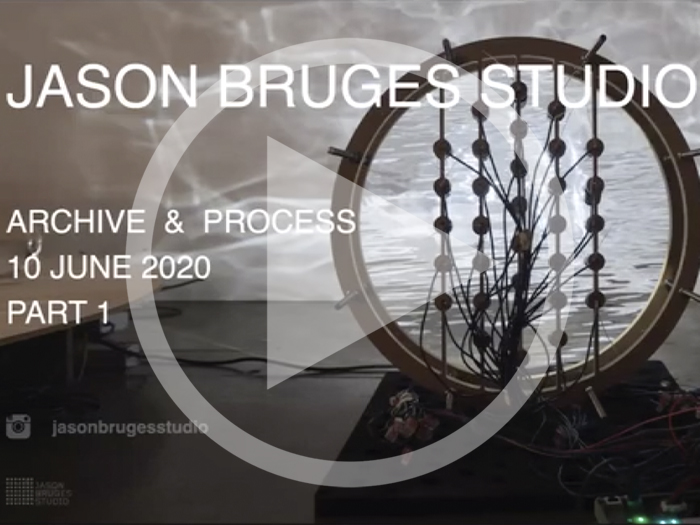
Jason Bruges has been delving into his studio's archive to rediscover some of its most intriguing experiments and prototypes. He has unearthed digital water lilies with their own underwater ecosystem and kinetic bubbles inspired by the mechanics of extendable mops.
In this 30 minute talk, Bruges takes viewers through some quirky moments and inspiring revelations that have defined the Studio's trajectory.
IALD Webinar: Circular Economy - How to Make it Work for Lighting Designers

The IALD hosts a panel discussion on various aspects of circular economy in lighting. Johan Moritz, lighting designer at the City of Malmö, Sweden, Carla Wilkins, Founding Partner of Lichtvision Design, and Alberto Portolani, CEO at Neri North America share insights, experiences and concrete examples about what it takes to make a circular economy work in the lighting sector.
Video courtesy of IALD.


